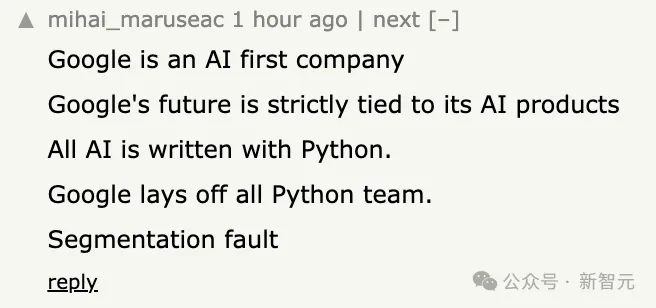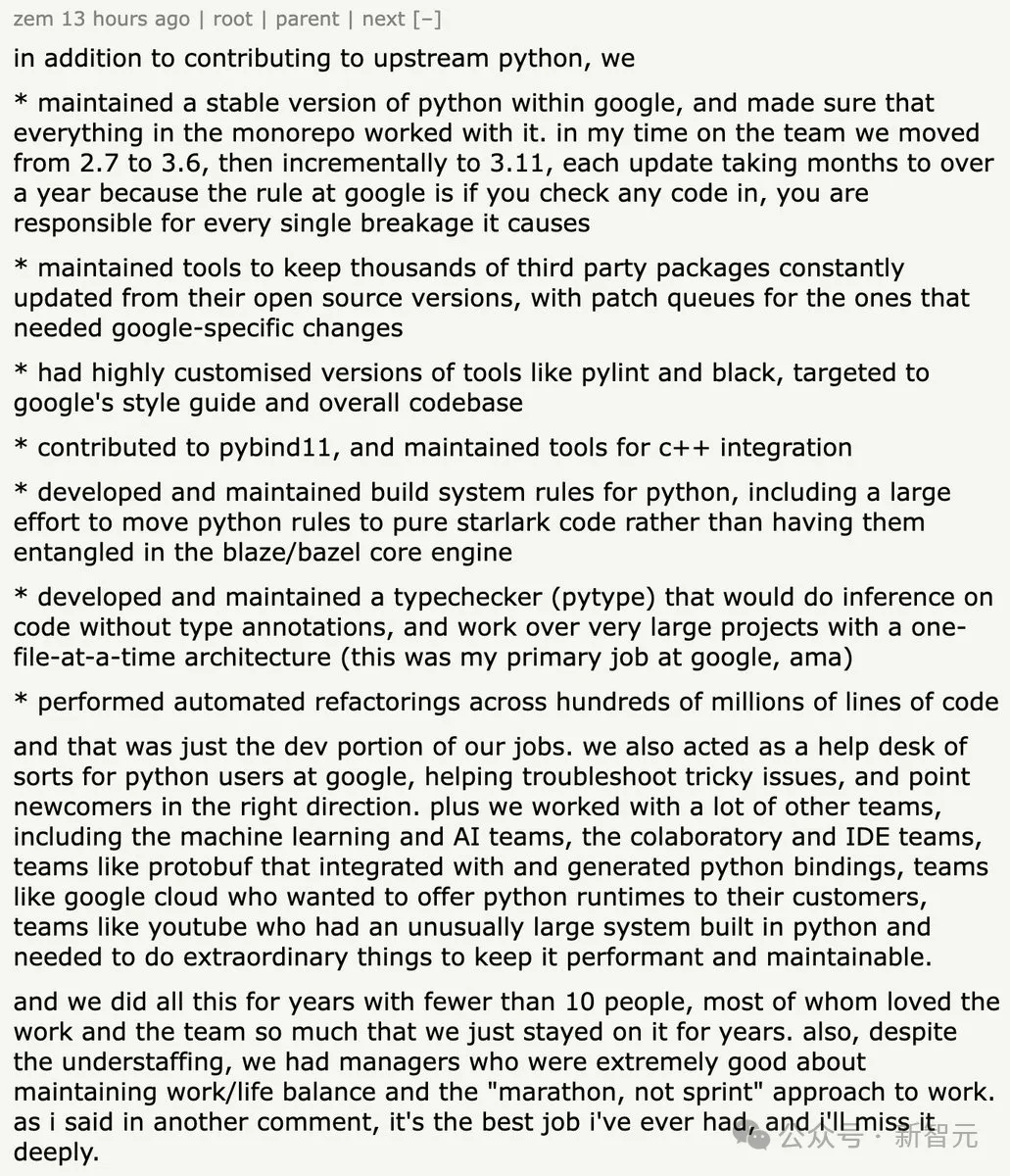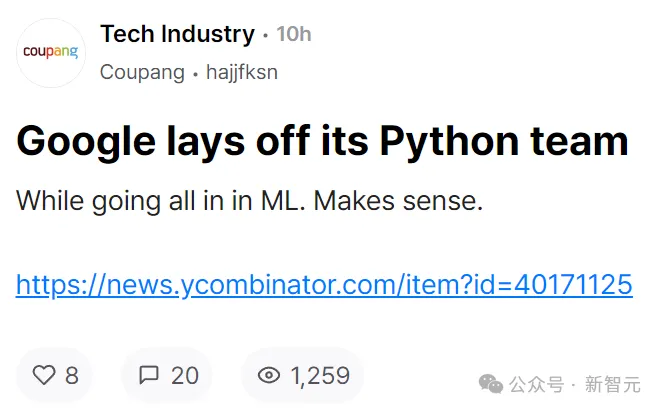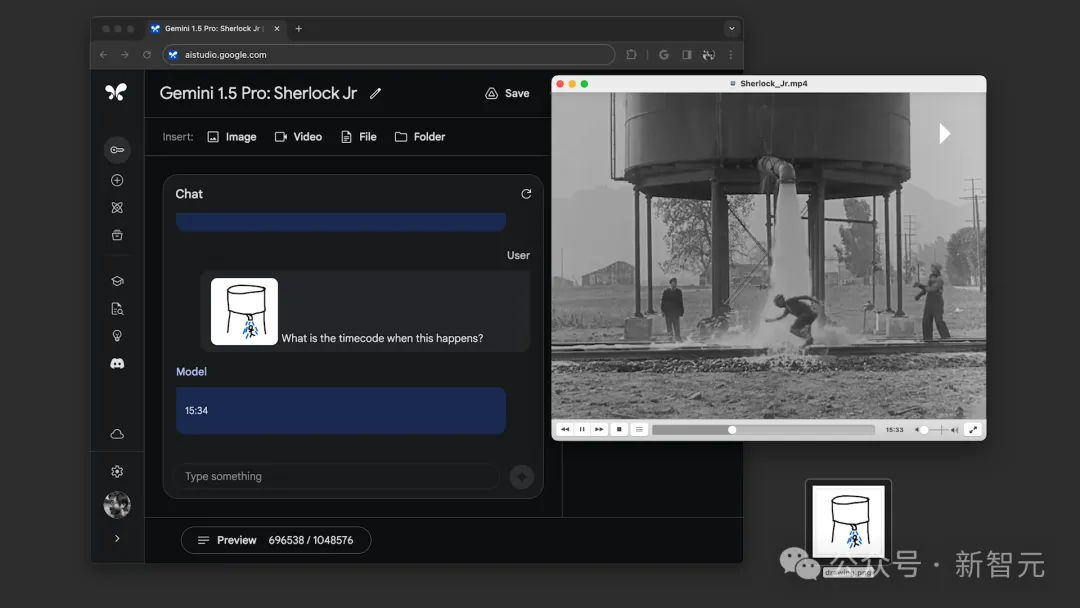Google breaks the $2 trillion milestone, but is revealed to have laid off its entire Python team? The father of PyTorch made outrageous comments

Recently, the financial reports of big technology companies have come out one after another, and Google laughed out loud——
Just last Friday, Google's market value reached the $2 trillion milestone.
Pichai said he was very satisfied! From now on, Google will continue to focus on AI and make it a disruptive force in the search field.
However, in the midst of a great situation, unexpected news has just been revealed: Google's Python team has been disbanded? !

After deciding on the AI-first strategy and then laying off the Python team, what kind of medicine is Google selling?
The Python team of less than 10 people was suddenly disbanded
Soumith Chintala, the father of PyTorch, expressed extreme shock at Google disbanding the entire Python Foundations team.
It's clear that this team has done a lot of critical work for Google.

Aaron Gokaslan, the maintainer of the pybind11 project, revealed the news to Soumith Chintala and also asked how to find new financial support for pybind11
On Hacker News, a team posted a long article complaining:

In addition to our contributions to the Python upstream project, we also undertake the following work:
- We maintain a stable version of Python within Google and ensure that the entire single codebase is compatible with it. During my time on the team, we upgraded from Python 2.7 to 3.6 and then gradually transitioned to 3.11. Each upgrade took several months to more than a year because Google has regulations that any code submitted must be responsible for all problems caused. .
- We also maintain tools to ensure that thousands of third-party packages are continuously updated from open source versions, and we manage a patch queue for packages that require Google-specific modifications.
- We also customized some tools, such as pylint and black, to adapt to Google's coding style and overall code base needs.
- We contributed to pybind11 and maintain some tools for C++ integration.
- We developed and maintained Python's build system rules, including a major project to fully migrate Python rules to Starlark code so that it no longer relies on Blaze/Bazel's core engine.
- We also developed and maintained a type checker (pytype) that could infer code without type annotations and handle very large projects, using a file-by-file architecture (which is my main responsibility at Google ).
- We also performed automated refactoring on hundreds of millions of lines of code.
And these are just some of our responsibilities:
We also provide support for Python users within Google, helping solve complex problems and guiding newcomers to get started. In addition, we also work with multiple teams, including machine learning and AI teams, Colaboratory and IDE teams, teams integrating with Python bindings such as protobuf, Google Cloud who want to provide customers with a Python runtime environment, and those who need to run large Python systems Teams like YouTube maintain high performance and maintainability.
These jobs were completed over several years by a team of less than 10 people, and most of us stayed here for a long time because we loved the work and the team. Despite being understaffed, our managers have done an excellent job of ensuring work-life balance and promoting a "long game, not a sprint" approach to work. As I mentioned in another comment, this is the best job I've ever had and I will miss it dearly.
At the same time, this incident also sparked heated discussions on the American version of Maimai Blind.

Some Google employees said that we don’t seem to use Python much in machine learning.

In this regard, JPMorgan employees analyzed: "Currently, most LangChain, LLM, and AI agent frameworks rely on PyTorch, CUDA, or lower-level C language. In comparison, TensorFlow's appeal is not as attractive as before. .
"In addition, with the development of AI automatic programming technology, it is expected that in the near future, developers will pay more attention to efficiency rather than just considering cost when choosing technology. This change heralds a new trend in technology selection, emphasizing performance and cost-effectiveness 's balance.

Employees from Microsoft, an old rival that has been unparalleled in the field of AI recently, complained: Google, who is it?

VMware employees were very puzzled: "Don't your Bard still generate Python code, and just let it go?"

AMD employees also expressed confusion. Maybe in the short term, Google saved millions of dollars in salary expenses, but in the long term, is this really good for the entire company?

Just now, Google ranks fourth in the world in terms of market capitalization
Just last Friday, Google reached a new milestone, with a market value exceeding $2 trillion.
This also makes it the fourth-highest market value among listed companies in the world. In front of it are Nvidia, Apple and Microsoft.
In fact, Google has been a member of the 2 trillion club before.
It briefly reached that threshold in November 2021 and earlier this month, but last Friday it closed with a market capitalization of over $2 trillion for the first time.

On that day, Google's stock price soared 10% to $171.95, the largest single-day increase since July 2015, and Google's market value reached $2.15 trillion.
It was this jump that almost increased Google's market value by nearly $200 billion, becoming one of the largest single-day value increases in the history of the stock market.
Since the beginning of this year, the company's stock price has risen by 23%, while the Nasdaq 100 index has increased by 5.3%.

The process of reaching a market value of US$2 trillion has been quite frustrating for Google.
Previously, the company's AI products have faced some high-profile criticism, causing the stock price to fluctuate.
Before the recent earnings report, investors even questioned: Can Google compete with companies such as OpenAI? This is despite the fact that it has invested heavily in AI for many years.
But Wall Street is optimistic about Google's stock in the long term. Among analysts tracked by foreign media Bloomberg, 85% recommend buying.
By 2026, Google's revenue is expected to continue to grow at a double-digit rate.
AI model makes great contributions
In its first-quarter financial report, Google's revenue exceeded analysts' expectations, mainly due to the outstanding performance of Google's search engine.
Among them, Pichai specifically mentioned the important contribution of Google Cloud, which mainly benefits from the AI services provided by Gemini.
In the first quarter of 2024, Google Cloud revenue, which drives the company's AI business, increased 28% year-on-year to $9.57 billion, driven by demand for generative AI. Google Cloud's operating income also increased directly from US$191 million to US$900 million.
According to Pichai, more than 60% of Gen AI startups and nearly 90% of Gen AI unicorns are now customers of Google Cloud.
Targeting various enterprises, Google provides access to a number of AI models, including multimodal Gemini Pro 1.5 and image AI Imagen 2.0, as well as models from other providers, and some open source models.

In a call with investors, Pichai shared -
In the field of cloud computing, we have launched more than 1,000 new products and features in the past eight months.
At the Google Cloud Next conference, more than 300 customers and partners shared their success stories using Google Cloud's generative AI, including global brands such as Bayer, Cintas, Mercedes-Benz, and Walmart.
Pichai believes that in addition to cloud computing, Google’s advertising business and Gemini subscription fees have also driven the revenue growth of Google’s AI services.
Revenue from Google services grew 14% in the first quarter to $70 billion, according to Philipp Schindler, chief commercial officer of Google parent company Alphabet.
Pichai emphasized that Google is ready to embrace the next wave of AI and all future opportunities.
Although the image generator had to be suspended because it was criticized for being too politically correct, Google is still determined to develop AI, viewing it as the key to business growth, and will continue to make large-scale investments in this area.
Google has moved the team that develops AI models under the umbrella of Google DeepMind to simplify development.
In addition, Google has established a single point of contact for these product teams building AI applications.
Search engine performance is outstanding
It now seems that the development of AI has not allowed Google to dig its own grave for its own search engine, but has instead created new possibilities.
Pichai believes that the disruption of search is similar to the transition to the web, mobile and voice.
And AI has just expanded the possibilities of search and brought new growth.
This kind of search generation experience (SGE) introduced by AI on the main search results page, Google has been experimenting for a year.

The addition of AI has greatly increased the number of Google search queries and user satisfaction.
Now, users around the world use AI to process billions of queries on Google’s browser. Using AI, they can obtain completely new information and ask questions in new ways, and the questions they ask can be more complex.
Now, Google is also prioritizing website traffic. Pichai did not reveal how to implement this specifically, because it goes against the natural attributes of Google’s AI search products.
This same problem also plagues Google’s chatbot competitors.
If the operator of the chat AI directly delivers the content of the website operator to the users of the AI robot, the entire system of the website will collapse.
In this case, how should the content ecosystem on the Internet work?
No one has an answer yet.